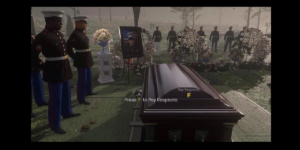Marc-Oliver Frisch’s always enlightening sales analysis is now posted at The Beat, looking at DC’s estimated numbers for December 2006, and buried towards the end is a very interesting breakdown of the Average Sales per Title of their three primary imprints. I’ve spotlighted the DCU as a point of interest:
DC UNIVERSE
12/2003: 29,263
12/2004: 36,925
12/2005: 44,993
12/2006: 44,641
—————
6 months: -12.6%
1 year : – 0.8%
2 years : +20.9%
3 years : +52.6%
As would be expected, the main DCU has seen some impressive growth over the past three years, fueled largely by Infinite Crisis and its numerous lead-ins, crossovers, tie-ins and spinoffs. What’s hidden beneath that growth, though, is how few books are actually selling above that 45k average: 12 of the 48 titles that shipped in December (not counting multiple issues of the same title), including the fading-fast Flash relaunch and two mini-series whose runs will end by this summer (52 and Justice). To be generous, four other DCU titles that have been selling above 45k copies didn’t ship in December, so let’s call it 16 out of 52, which means that only 31% of their line is selling “above average”.
Much of the bottom-end of the scale is made up of failed Brave New World / Infinite Crisis spinoffs, or trademark placeholders featuring B-list characters with limited fanbases (and the majority of those are selling less than 30k/issue) so as has been rumored, it looks like 2007 will definitely see yet another Universe-spanning crossover that will boost the short-term bottom line (maybe…) while further eroding their mid-list.
[Side Note: Check out Vertigo’s painful three-year decline!]
One question that often comes up in reference to the Big Two is why they don’t simply scale back the number of titles they publish since, in theory, retailers (and fans) would be more likely to take a chance on one or two strong Infinite Crisis spinoffs as opposed to six marginal efforts, especially if they weren’t also shelling out for three variations of Batman and Superman each (not counting out-of-continuity mini-series), and a couple of hardcore, mid-list favorites. It’s a valid question that, aforementioned protection of trademarks aside, is perhaps best answered by a rather simplistic variation on the Long Tail theory: if they don’t, Image, Dark Horse or some other enterprising publisher will. AKA, market share.
The Big Two can usually strong-arm retailers into ordering a decent amount of almost anything with a #1 on it, while sustaining those sales figures has proven incredibly difficult. As a result, we get unnecessary and ill-conceived relaunches and spinoffs, or a slew of ill-fated brand new series featuring characters who can’t actually support one (and aren’t given the marketing support to even give them a fighting chance) and are eventually replaced on the schedule by yet another new ongoing (or, in an increasingly more frequent momentary flash of realism, a mini-series)…lather, rinse, repeat — effectively guaranteeing a chokehold on their respective 35-40% market shares. And retailers, of course, continue to play the game, virtually forced to in order to maintain the discount levels that keeps their doors open.
It’s a hell of a Catch-22 that doesn’t exactly encourage responsible behavior, but it’s the way the game will continue to be played until someone comes along and figures out a way to crack the code. I’d venture to say that it’s clearly not Image’s approach of flooding the market with an uneven mix of variations on the Big Two’s bread and butter (with a healthy dose of Vertigo on the side), at least not for the majority of their creators who get lost in their undermarketed flood month after month.
Do you like email?
Sign up here to get my bi-weekly "newsletter" and/or receive every new blog post delivered right to your inbox. (Burner emails are fine. I get it!)




Wouldn’t simply keeping one TP starring the character in print be enough to protect the trademark?
Probably; but there’s no significant recurring revenue (minimal as it might be) in keeping a single TPB in print, especially not of second and third-tier characters.
Even at 25k copies/issue, using B-list talent, I’d guess that DC’s still making a decent profit on most of their books, and they’re serving a subset of hardcore fans who might shift those $3 elsewhere if they didn’t keep publishing them.
And, of course, there’s the whole market share angle: more available product, more gross revenue, higher market share, higher advertising rates, etc… ’tis a tangled web!